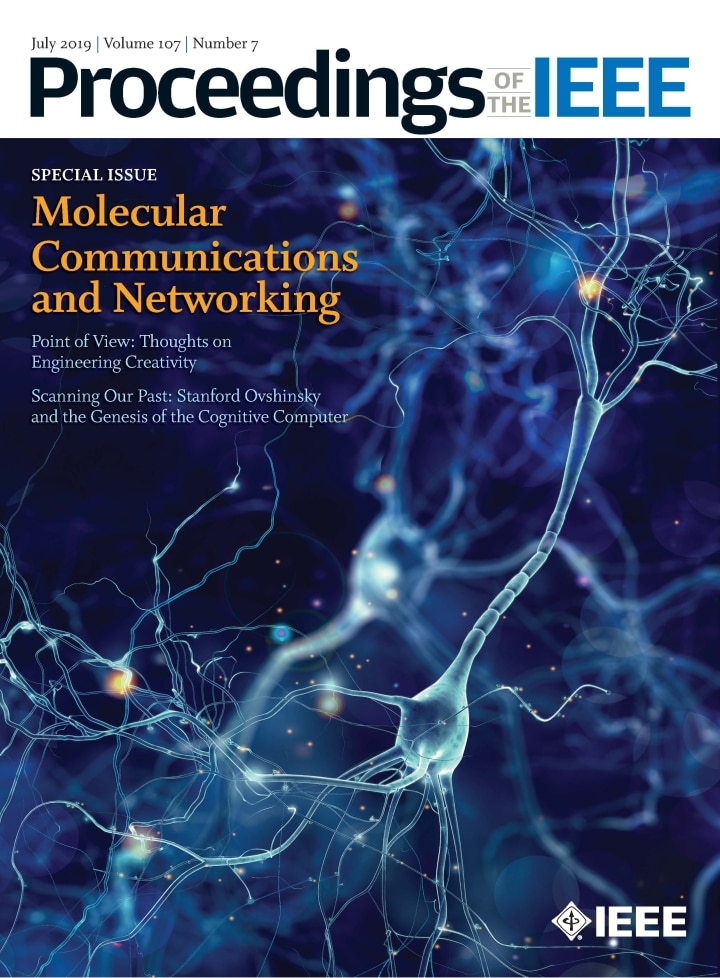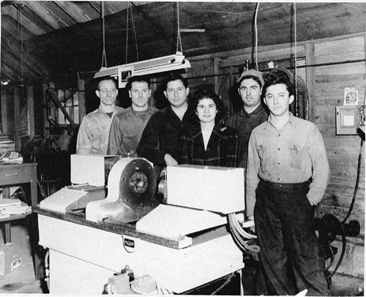2019 Journal Issues July 1, 2019


Special Issue: Molecular Communications and Networking
Volume 107, Issue 7
July 2019
Guest Editors



Special Issue Papers
By I. F. Akyildiz, M. Pierobon, and S. Balasubramaniam
By Ian F. Akyildiz, M. Pierobon, and S. Balasubramaniam
This article proposes a mathematical framework to define the main functional blocks of molecular communication theory, supported by general models from chemical kinetics and statistical mechanics.
By V. Jamali, A. Ahmadzadeh, W. Wicke, A. Noel, and R. Schober
This article focuses on the main research results achieved so far in the mathematical channel modeling for an end-to-end molecular communication (MC) channel, including the effects of molecules release mechanisms, the MC environment, as well as the reception mechanism, and how each of these has an impact on the information transfer performance.
By M. Kuscu, E. Dinc, B. A. Bilgin, H. Ramezani, and O. B. Akan
This article focuses on the design of transmitters and receivers for molecular communication (MC). It also reviews existing literature on transmitter and receiver architectures for realizing MC, including both nanomaterial-based nanomachines and/or biological entities.
By C. Rose, I. S. Mian, and M. Ozmen
This article introduces a mathematical framework to infer analytical channel capacity bounds where the discrete nature of molecules is put into perspective in the processes of assemblage, release, and capture of matter in a molecular communication (MC) system.
By T. Nguyen, T. S. Jones, P. Fontanarrosa, J. V. Mante, Z. Zundel, D. Densmore, and C. J. Myers
This article presents an automated workflow for the design of asynchronous sequential genetic circuits by stemming from the assumption that while most electronic circuits utilize a timing reference, biological substrates are, in general, lacking a similar reliable high-frequency clock signal.
By C. McBride, R. Shah, and D. D. Vecchio
This article discusses the design of molecular communication (MC) functionalities in biological cells through synthetic biomolecular circuits in light of their apparent lack of modularity, in contrast to their electrical counterpart.
By J. M. Jornet, Y. Bae, C. R. Handelmann, B. Decker, A. Balcerak, A. Sangwan, P. Miao, A. Desai, L. Feng, E. K. Stachowiak, and M. K. Stachowiak
The article discusses the use of optical nano-bio interface to connect biological networks to electronic computing system and reviews the state of the art and future directions in light-mediated control of genomes, and consequent control of cell development.
By E. Kim, J. Li, M. Kang, D. L. Kelly, S. Chen, A. Napolitano, L. Panzella, X. Shi, K. Yan, S. Wu, J. Shen, W. E. Bentley, and G. F. Payne
This article reviews recent research findings in the study of reduction/oxidation (redox) reactions as a molecular communication (MC) modality that propagates both electrical and biological signals.
By M. Veleti ́c and I. Balasingham
This article outlines brain diseases that promote dysfunction in the synaptic communication system, and how these could be addressed through brain implant technology that stems from molecular communication (MC) research.
By T. Nakano, Y. Okaie, S. Kobayashi, T. Hara, Y. Hiraoka, and T. Haraguchi
This article presents an application-driven model to support the development of molecular communication (MC) links and networks where the nodes have dynamic behavior while communicating.
Point of View
By G. Temes

Scanning Our Past
B L. Hoddeson, P. Garrett, and G. Wicker

1 Comment
Comments are closed.